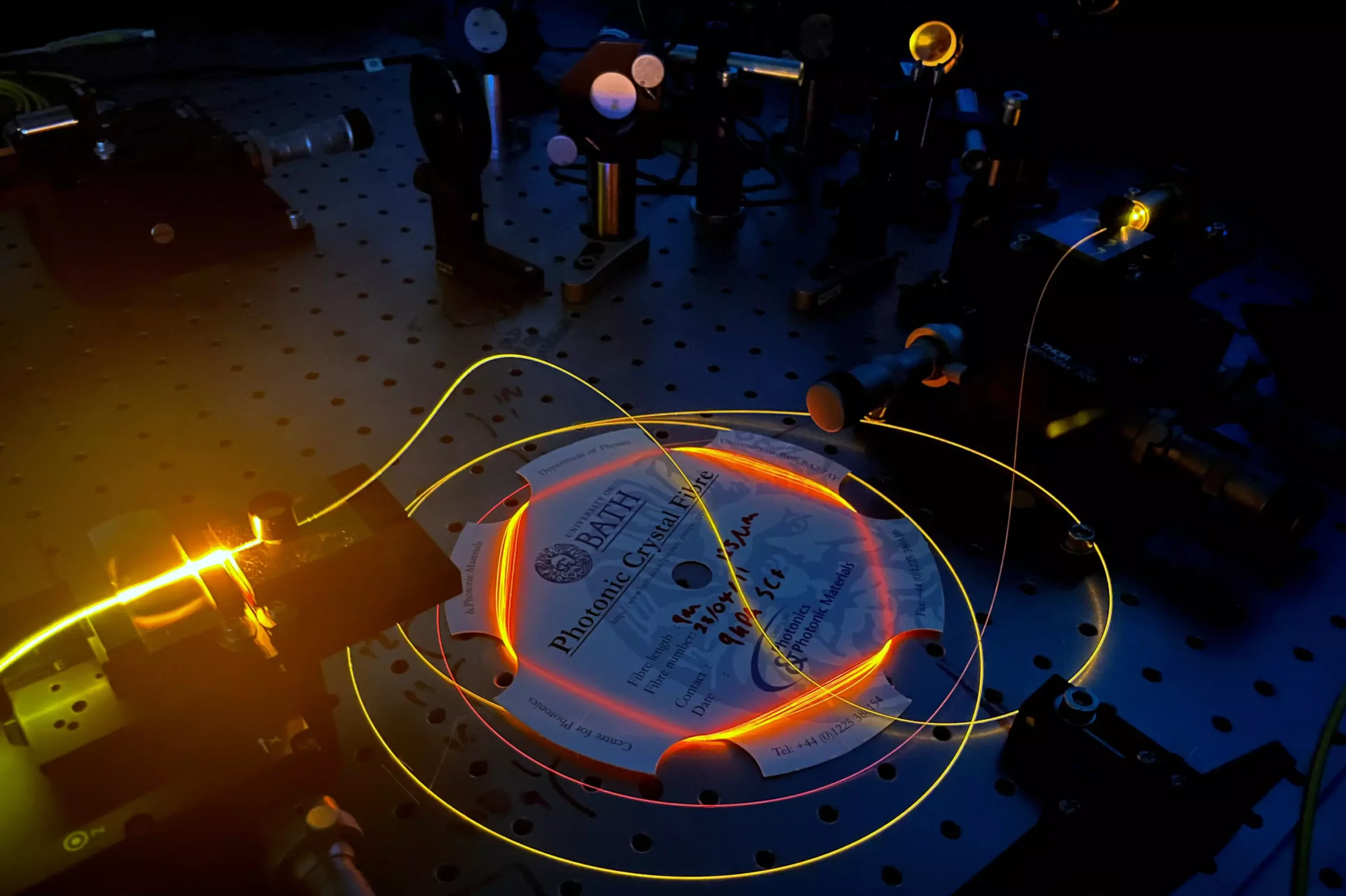As we stand on the brink of a quantum revolution, the advancements made by physicists at the University of Bath in the UK offer a glimpse into a remarkable future. These researchers have designed a new generation of specialty optical fibers aimed at revolutionizing data transfer in the age of quantum computing. While the basic structure of modern optical fibers has served traditional telecommunications adequately, their capabilities fall short when confronted with the unique demands posed by quantum technology. The emergence of these new fibers could herald a significant leap in how we transmit information, promising a future filled with extraordinary computational power and unprecedented security.
Traditional optical fibers, which are primarily made of silica glass, are limited by their structural characteristics. They transmit light at wavelengths strictly influenced by the glass’s inherent losses—wavelengths that bear no compatibility with the advanced operational requirements of quantum devices like single-photon sources and quantum bits (qubits). The Bath researchers’ micro-structured fibers introduce a paradigm shift, leveraging a sophisticated design filled with air pockets that run along their lengths. This intricate design allows for enhanced manipulation of light properties, setting a foundation for groundbreaking advancements in quantum communication.
The Quantum Advantage: A New Realm of Computation
Light serves as a promising channel for quantum computation because of its fundamental particles—photons—which possess unique quantum characteristics. One of the most fascinating aspects of photons is the property of quantum entanglement. This phenomenon enables pairs of photons, even when separated by vast distances, to exhibit coordinated behaviors that classical bits cannot replicate. For instance, entangled photons can simultaneously exist as both one and zero, vastly increasing the computational power available to quantum systems.
The Bath team articulates that the future will require not just any optical fibers, but specialized fibers that can support and enhance quantum technologies. These include diverse applications, from quantum repeaters enhancing long-distance communications to optical fibers that can effectively house quantum memory or serve as sources of entangled photons. As physicist Dr. Cameron McGarry succinctly states, the quantum internet is not merely an abstract concept; it demands a radically different supporting infrastructure that our current systems do not provide.
Challenges and Innovations in Fiber Technology
The shift toward a quantum internet introduces myriad challenges that must be carefully dissected and addressed. The Bath researchers have penned an insightful perspective detailing potential pathways for overcoming these obstacles. Their work delves into the scalability of robust quantum networks that will depend on both long-range communication fibers and specialty fibers capable of integrating quantum repeaters directly into the network, thereby extending operational ranges of quantum technology.
Moreover, the versatility of these specialty fibers could enable them to fulfill multifaceted roles within a quantum network. The potential to jump from just connecting nodes to actively facilitating quantum computations at those nodes enriches the scope of what fiber optic technology could achieve. As the research team notes, these fibers could operate not just as conduits but potentially as low-loss switches and quantum wavelength converters, consolidating their utility in the quantum landscape.
Industry Implications and Future Prospects
The implications of these advancements extend far beyond the confines of academic research. With quantum technologies promising to solve complex mathematical problems, design new pharmaceuticals, and revolutionize encryption techniques, the industries already placing their bets on quantum potential stand to gain a major competitive edge. Dr. Kerrianne Harrington, a postdoctoral researcher at Bath, emphasizes the rapid advancements in microstructured optical fibers, noting their growing significance to industries invested in quantum technologies.
Furthermore, the ability of these specialty fibers to tightly confine and transport light over extensive distances positions them uniquely within the quantum ecosystem. This capability not only facilitates the generation of entangled photons but also paves the way for the creation of exotic light states that could lead to significant breakthroughs in quantum computation, precision sensing, and secure communications.
With the prospect of quantum advantage—a point where a quantum device outperforms classical computers—on the horizon, the research achievements from Bath are more than mere technical enhancements; they signify a critical step toward unlocking the enormous promise of quantum technologies. As we gaze into the future, it becomes clear that the optical fibers crafted at the University of Bath will play a vital role in this ongoing scientific saga, laying the groundwork for the quantum computers of tomorrow and transforming the landscape of data transfer as we know it.


Leave a Reply